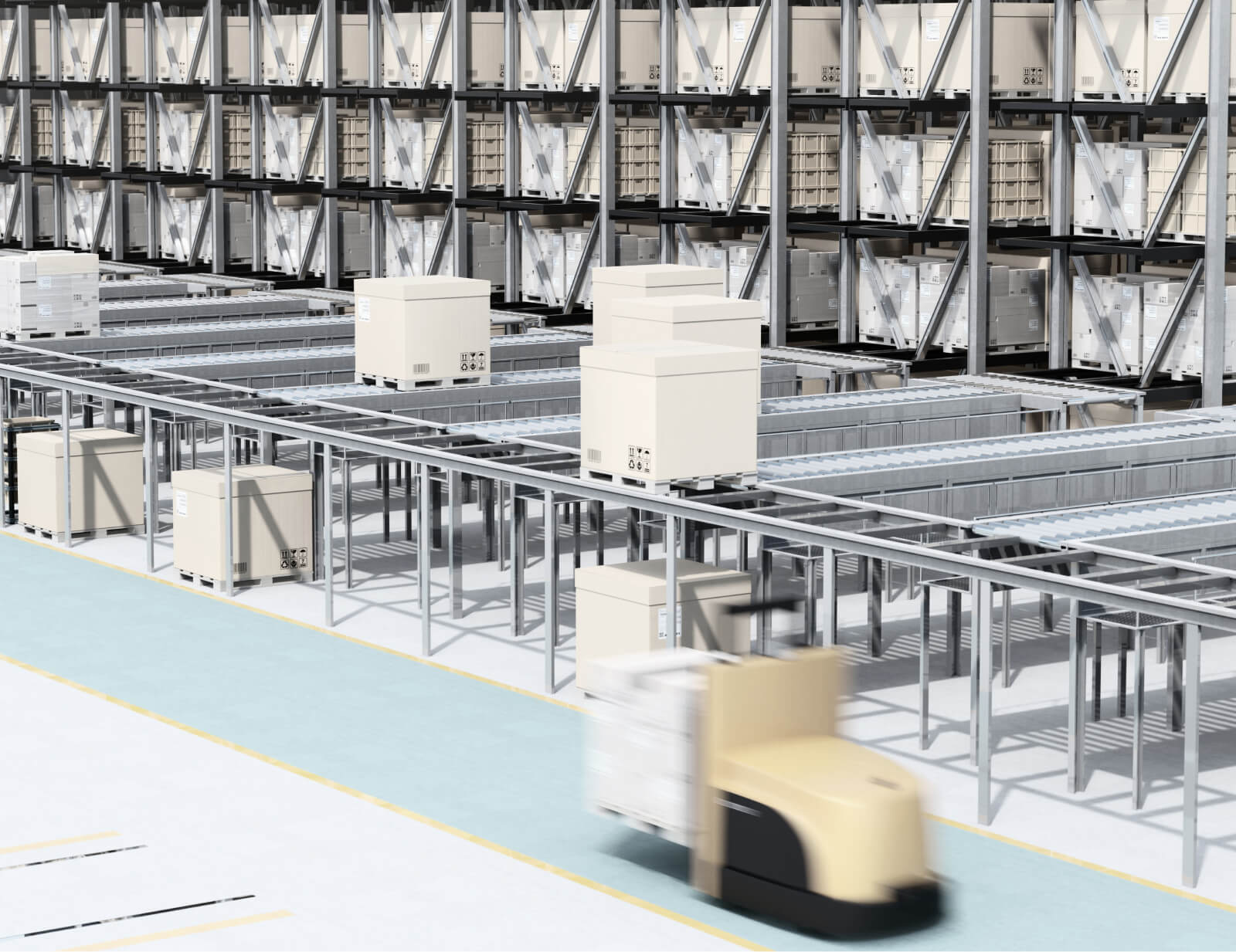
Consumer buying habits have shifted significantly in the past three years. Texas Monthly reported that American consumers spent $3.4 billion on curbside pickup in July 2022. According to a survey by Illinois analytics firm Brick Meets Click, that was a half-billion dollars more than they spent in July 2021.
In response, retailers have created more flexible inventory and distribution models — namely micro-fulfillment centers (MFCs), small warehouses for storing and distributing items to customers more efficiently.
I spoke with FourKites experts Glenn Koepke, GM of Network Collaboration, and Mark Delaney, VP of Retail Industry Strategy, to learn more about MFCs. The following insights are edited and combined based on those discussions.
Micro-fulfillment centers are inventory storage facilities that are often small in scale and highly automated. Businesses often use micro-fulfillment centers to store their inventory closer to consumers for faster delivery times, automate their order fulfillment process, and meet ever-increasing customer demand.
Increasingly, retailers are making space for micro-fulfillment centers within their stores. Adopting micro-fulfillment, or micro-warehousing, allows for more efficient operations and better fulfillment of e-commerce orders. Items can be picked and prepared and — if necessary — delivered directly to the customer’s door without going through a third-party distributor.
Traditionally, before these strategies became mainstream, inventory would quickly become obsolete while sitting in main warehouses and distribution centers, awaiting final delivery. Now, with omnichannel shopping and micro-fulfillment infrastructure becoming more widespread, products sitting at certain nodes in the supply chain can be sold and distributed more quickly, eliminating the need for discounts as these products become out of date or out of season.
While several large players have embraced MFCs and the technology that operates them, many others are still waiting for a proven return on investment. Though the solutions themselves are not prohibitively expensive, there are other key requirements for operating an MFC:
Even if you meet these requirements, there are other factors to consider as you explore your MFC strategy.
MFCs can put more pressure on inventory availability and create a need for accelerated transit times to fulfillment centers, more carriers and a broader set of lanes to manage. While supply chains are inherently complex, MFCs can lead to more stress and less inventory density in certain places.
Micro-fulfillment also upends traditional network design models that shippers and retailers are accustomed to running. In the past, most retailers re-examined their networks every few years. However, in the age of micro-fulfillment, they should do so at least annually — if not even more frequently — as new MFCs come online.
In some cases, a larger and more decentralized carrier base will be needed to support the physical network and lane patterns. This puts more pressure on resources to manage new partners, contracts and performance.
While it’s important to be mindful of the knock-on effects of MFCs, the challenges are not insurmountable and the benefits of a more agile supply chain will win out.
The retailers and suppliers that will have the most success with an MFC strategy will be those who embrace technology and collaboration and are quick to make the appropriate investments.
As it stands, it’s challenging to manage and focus on the 3,000+ suppliers who supply the products we expect to see on store shelves. While technology has enabled retailers to do more with the same size workforce, MFCs will require more innovation and new ways of working.
To invest appropriately, determine what is required of your supply chain to hit your company goals. Begin by walking through the end-to-end process with frontline teams and identifying any waste or ways to accelerate getting products on shelves more efficiently. This process is an opportunity to develop your supply chain team and empower them to help stack rank where investments are needed.
Ultimately, you will create a list of initiatives and determine which are above or below the line of urgency. From there, the appropriate business cases and required investment needed will be clear. But remember that projects don’t succeed simply because of a strong business case; the deployment and ensuring the elimination of waste and bottlenecks are key.
Once retailers have identified the supply chain changes required to successfully incorporate a new MFC, they often realize they also need a technology platform that provides end-to-end real-time visibility at the order or SKU level, one that can aid supplier collaboration. That’s because eliminating the need for manual tracking, incorporating in-transit inventory into planning models, and giving warehouse and replenishment teams better tools to staff and operate efficiently are core to waste-elimination and efficiency efforts.
For example, FourKites offers order and shipment collaboration through its Network Visibility solution. Suppliers can share when product is inbound to retailers through easily configured, low-maintenance solutions, allowing retailers to see their inbound shipments with up-to-the-minute accuracy.
We are constantly striving to create efficiencies in our supply chain, especially when it comes to knowing exactly when we can expect products to arrive from our vendors into our distribution network. The ability to track SKU-level details across both managed and unmanaged freight with FourKites’ Network Visibility has enhanced our warehouse and labor productivity significantly. In addition, it has helped us improve our instock position and has also provided supply planners a self-service approach to find their loads.
While consumer habits and preferences will always be a moving target, having the right supply chain infrastructure enables you to keep up. As retailers face a potentially weak economy in 2023, now is the time to assess how to be stronger than the competition.
Want to learn more? Schedule a demo to find out how leading retailers are transforming their supply chain with FourKites.